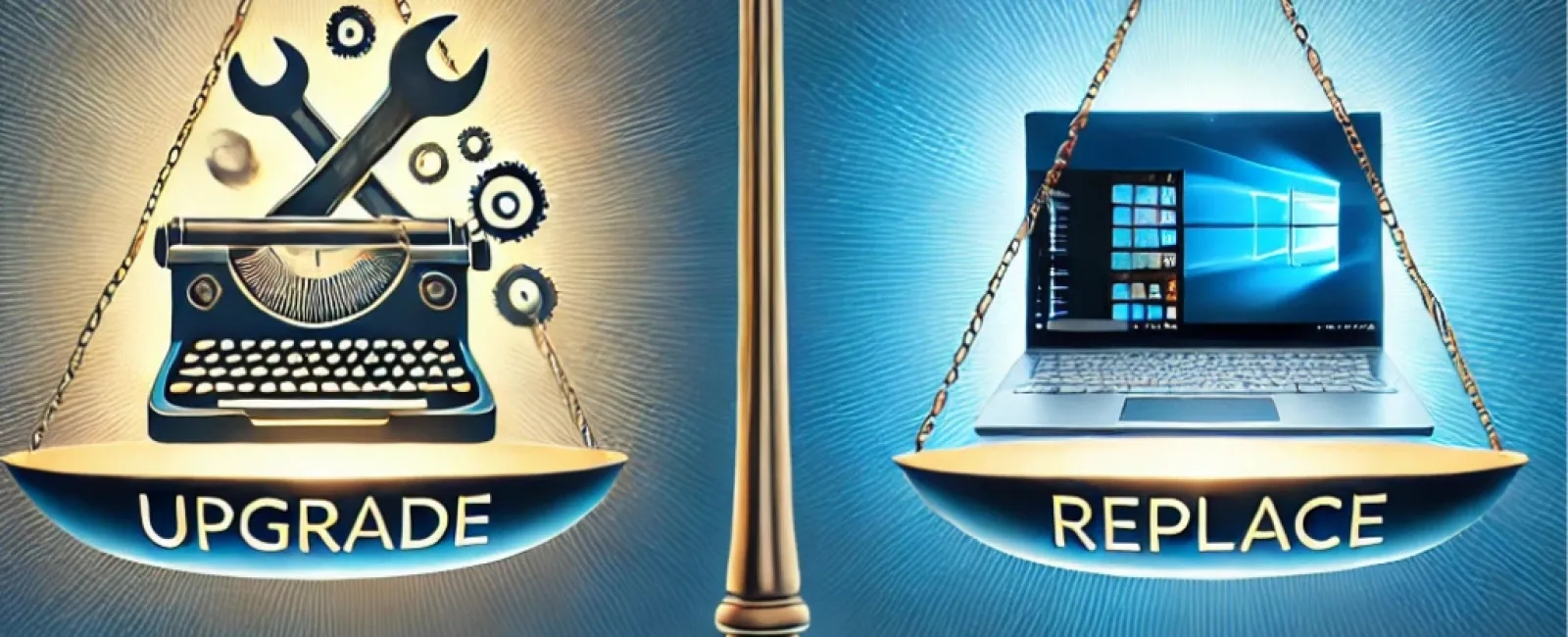February 17, 2025
Windows 10's end-of-life is approaching, with official support ending in October 2025. This means it's time for businesses and individuals still using the operating system to make a crucial decision: Should you upgrade your current devices to Windows 11, or is it time to replace them entirely?
Here's a guide to help you choose wisely based on your needs, budget, and objectives.
Step 1: Verify Compatibility
Before making a decision, check if your existing hardware meets the requirements for Windows 11. Microsoft has established stringent system requirements to ensure the new OS operates efficiently and securely. Key requirements include:
- A compatible 64-bit processor (1 GHz or faster with at least 2 cores)
- 4 GB of RAM (8 GB or more is recommended for optimal performance)
- 64 GB of storage
- TPM version 2.0 (Trusted Platform Module)
How To Verify:
- Use Microsoft's PC Health Check tool for a quick compatibility assessment.
- Manually review your device's specifications if necessary.
Outcome:
If your system doesn't meet the compatibility criteria, you'll need to upgrade your hardware or consider replacing it.
Step 2: Consider the Age of Your Devices
How old is your current hardware? Devices over 5 years old are often slower, less efficient, and may not support Windows 11's requirements.
Reasons to Replace Older Devices:
- They are likely nearing the end of their life cycle.
- Upgrading components (like RAM or storage) might not yield significant performance gains.
- They present greater security risks due to outdated firmware and hardware vulnerabilities.
Step 3: Assess Your Performance Needs
Does your current hardware satisfy your daily requirements? Consider:
- Speed: Are your devices slowing down crucial tasks?
- Reliability: Do you encounter frequent crashes or malfunctions?
- Scalability: Can your current hardware handle future software updates and workloads?
When to Upgrade:
If your devices are still performing well, upgrading to Windows 11 could be the most cost-effective option.
When to Replace:
If performance issues are affecting productivity, replacing your hardware might save money in the long run by reducing downtime and inefficiencies.
Step 4: Compare Costs
Budget is always a consideration when deciding whether to upgrade or replace.
Upgrading Existing Devices:
- Lower initial cost (if compatible).
- May incur additional expenses for component upgrades (e.g., adding more RAM).
Replacing Devices:
- Higher initial cost but potentially better long-term value.
- Includes newer hardware designed for Windows 11's features and security.
Step 5: Think About Future-Proofing
Newer devices come with the latest technology, offering:
- Enhanced security features like hardware-based encryption.
- Faster processing speeds and improved energy efficiency.
- Better compatibility with modern applications and peripherals.
Investing in new devices now can position your business for growth and innovation, ensuring your systems remain efficient for years to come.
Pro Tip: Consult an IT Professional
Still uncertain? Collaborating with an IT provider can streamline the decision-making process. They can:
- Evaluate your current setup.
- Advise whether to upgrade or replace based on your specific needs.
- Manage the transition to minimize downtime and disruption.
Take The Next Step
Deciding whether to upgrade or replace your devices
doesn't have to be overwhelming. Start with a FREE Call With Our CEO to
evaluate your systems and get personalized recommendations for a smooth
transition to Windows 11.
Click here or give us a call at 929-523-2921 to schedule your FREE Call With Our CEO today!
Don't wait until the October 2025 deadline - get ahead
of the game and ensure your business is ready for what's next.




